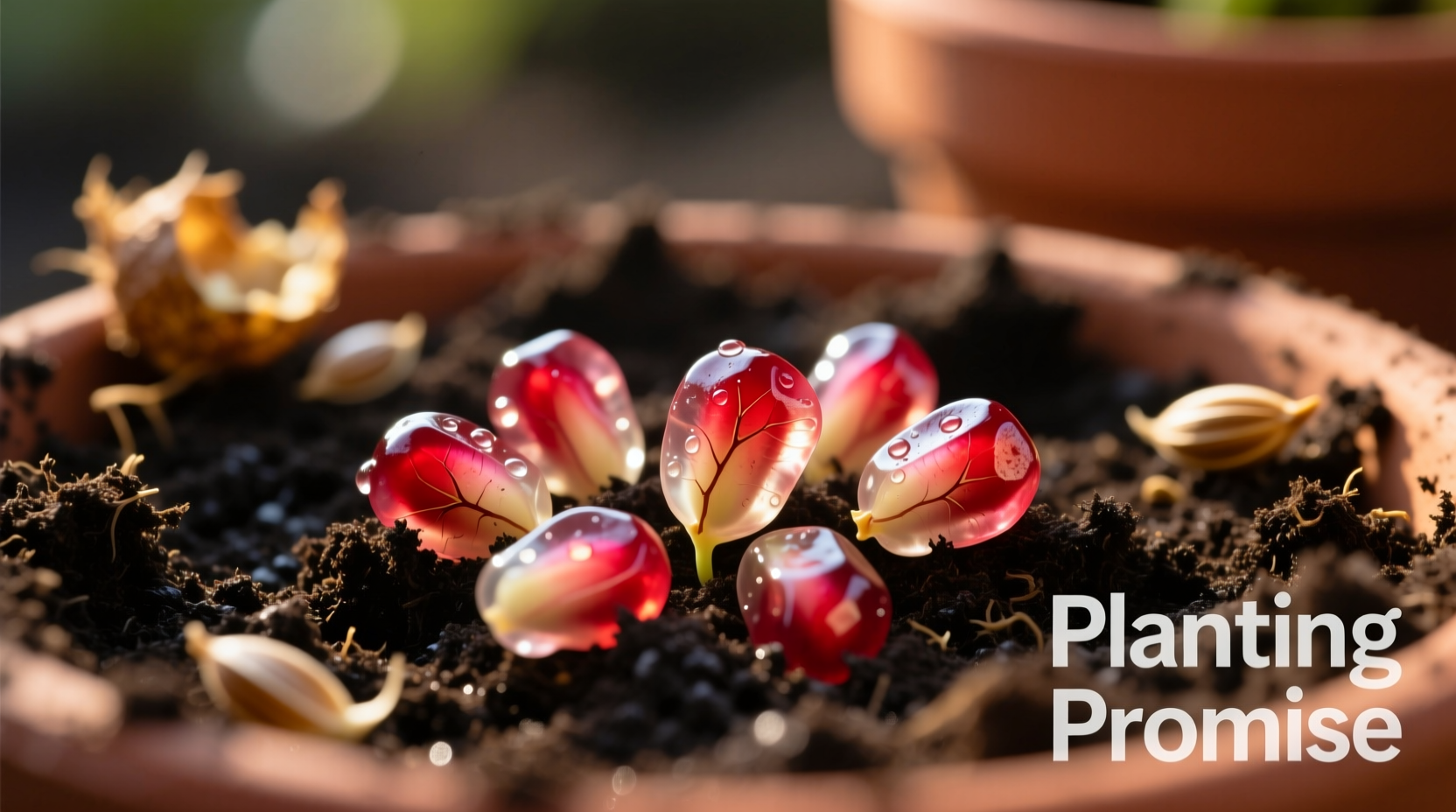Have you ever wondered if you can grow that vibrant pomegranate fruit you just enjoyed into a thriving plant? The answer is yes—you can successfully grow pomegranate from seed with the right approach. While commercial growers typically use cuttings or grafting for consistent fruit quality, growing from seed offers a rewarding gardening experience and creates beautiful ornamental specimens. This comprehensive guide walks you through every step, from seed extraction to harvesting your first fruit, with practical tips backed by horticultural science.
Why Grow Pomegranate from Seed?
Before diving into the process, understand what to realistically expect. Seed-grown pomegranates typically take 2-3 years to produce their first fruit, and the fruit quality may differ from the parent plant due to genetic variation. However, they make stunning ornamental plants with glossy leaves, vibrant orange flowers, and unique fruit formation. The University of California Cooperative Extension confirms that pomegranate seeds maintain viability for several months when stored properly, making home propagation feasible for gardeners worldwide.
Step 1: Seed Selection and Preparation
Start with fresh, mature pomegranate seeds for the highest germination success. Follow these preparation steps:
- Extraction technique: Scoop seeds from a ripe pomegranate and rinse thoroughly under cool water to remove all pulp and membrane
- Cleaning process: Gently rub seeds between your fingers to remove residual arils—this prevents mold during germination
- Viability test: Place seeds in water; viable seeds will sink while non-viable ones float (discard floating seeds)
- Stratification requirement: Refrigerate cleaned seeds in a damp paper towel inside a sealed bag for 4-6 weeks at 40°F (4°C)
According to research published in the HortScience Journal, stratification significantly improves pomegranate seed germination rates by breaking dormancy. This cold treatment mimics natural winter conditions that seeds would experience in their native Mediterranean habitat.

Step 2: Planting Your Pomegranate Seeds
Proper planting technique sets the foundation for healthy growth:
- Soil mix: Use a well-draining potting mix with equal parts peat, perlite, and compost (pH 5.5-7.0)
- Container selection: Choose pots with drainage holes—4-inch containers work well for initial growth
- Planting depth: Sow seeds 1/4 inch deep, covering lightly with soil
- Watering: Moisten soil thoroughly but avoid saturation—keep consistently damp but not soggy
| Germination Factor | Optimal Condition | Common Mistake |
|---|---|---|
| Temperature | 70-85°F (21-29°C) | Too cold slows germination |
| Light Exposure | Bright, indirect light | Direct sun burns seedlings |
| Soil Moisture | Consistently damp | Overwatering causes rot |
Step 3: Germination and Early Care
Patience is key during the germination phase:
- Germination timeline: Expect sprouts in 30-40 days under optimal conditions
- Light requirements: Provide 6-8 hours of bright, indirect light daily
- Temperature needs: Maintain consistent warmth (70-85°F/21-29°C)
- Watering schedule: Water when top inch of soil feels dry
The USDA Agricultural Research Service notes that pomegranate seedlings develop a deep taproot system early in growth, which explains their drought tolerance once established. During this critical seedling stage, protect plants from temperature extremes and drafts. If multiple seeds germinate in one container, thin to the strongest seedling when they reach 2 inches tall.
Step 4: Long-Term Growth and Care
As your pomegranate matures, adjust your care routine:
- Transplanting: Move to larger pots when roots fill container (typically after 6-8 months)
- Fertilization: Apply balanced 10-10-10 fertilizer monthly during growing season
- Pruning: Begin light pruning at 1 year to shape the plant and encourage branching
- Pest management: Watch for spider mites and whiteflies—treat with insecticidal soap
For outdoor cultivation in suitable climates (USDA zones 7-11), gradually acclimate plants to direct sun over 2-3 weeks. The University of Florida IFAS Extension recommends providing at least 6 hours of direct sunlight daily for fruit production. Container-grown plants can be brought indoors during winter in colder climates.
Realistic Expectations for Seed-Grown Pomegranates
Understanding what to expect prevents disappointment:
- Fruiting typically begins 2-3 years after planting
- Fruit quality may differ from the parent plant due to genetic variation
- Ornamental value remains high regardless of fruit production
- Grafting onto established rootstock can improve fruit quality if desired
Commercial growers rarely use seed propagation for fruit production because pomegranates don't grow true to seed—the resulting fruit often differs from the parent. However, for home gardeners seeking an educational project or attractive ornamental plant, seed propagation offers significant rewards. The Royal Horticultural Society confirms that pomegranate plants grown from seed develop stronger root systems than grafted varieties, enhancing their resilience.
Troubleshooting Common Issues
Address these frequent challenges:
- No germination after 60 days: Seeds may be too old or lacked proper stratification
- Yellowing leaves: Often indicates overwatering or poor drainage
- Leggy growth: Increase light exposure gradually
- No flowers after 2 years: Insufficient sunlight or nutrients
Remember that pomegranate plants grown from seed serve primarily as ornamental specimens. If fruit quality is your primary goal, consider purchasing a grafted plant of a known cultivar like 'Wonderful' or 'Hicaz'. However, the journey of growing from seed provides invaluable gardening experience and a deeper connection to your plant.











 浙公网安备
33010002000092号
浙公网安备
33010002000092号 浙B2-20120091-4
浙B2-20120091-4